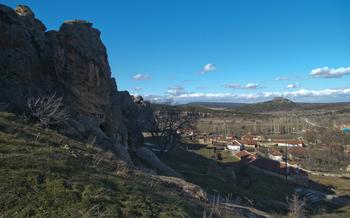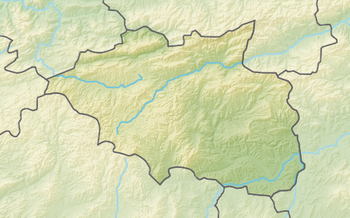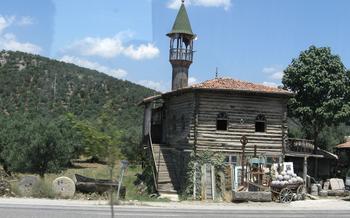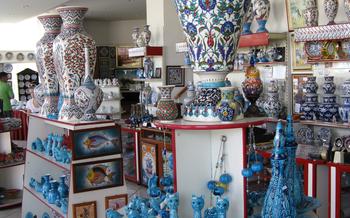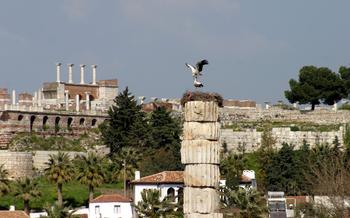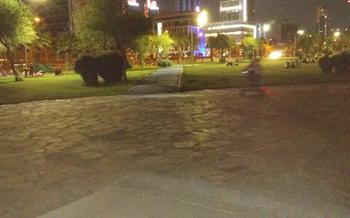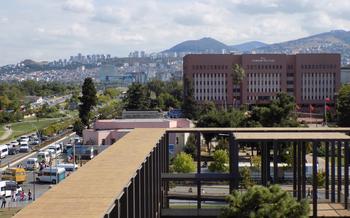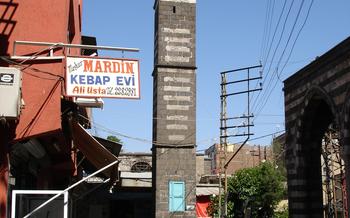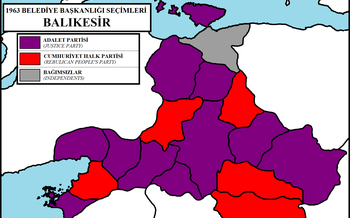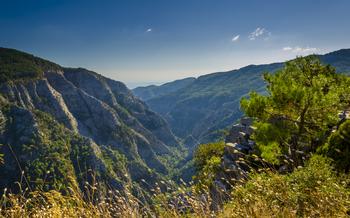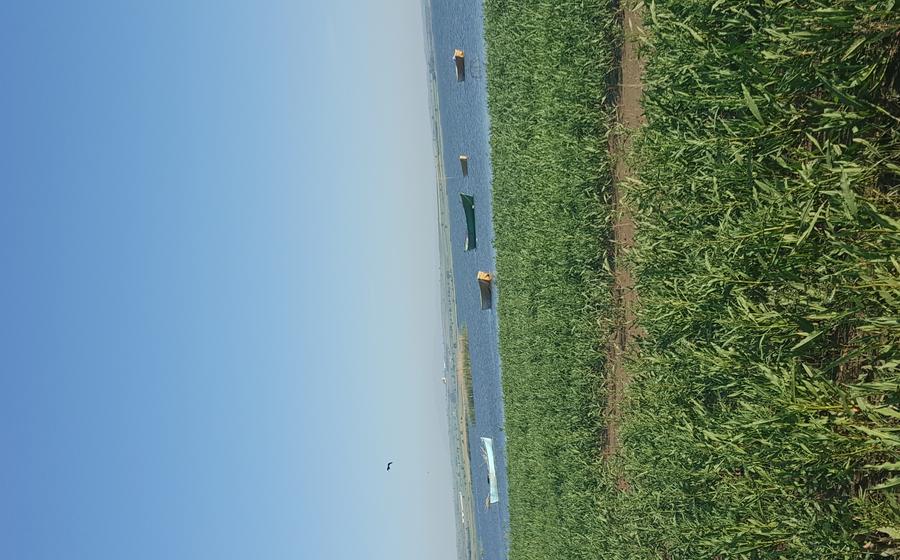
The Ruins of Daskyleion
- The Ruins of Daskyleion: A Historical Overview
- Location and How to Get There
- Entrance Fees and Visiting Hours
- Exploring the Ruins: What to See
- The Royal Palace: A Glimpse into Ancient Grandeur
- The Temple of Cybele: A Sacred Place of Worship
- Defensive Walls and Gates: Protecting the City
- Agora and Residential Areas: Daily Life in Daskyleion
- The Museum of Daskyleion: Preserving the Past
- Local Cuisine and Dining Options
- Accommodation Options for Visitors
- Events and Festivals in Balıkesir
- Off-the-Beaten-Path Gems
- Insider Tip: Photography Opportunities
The Ruins of Daskyleion: A Historical Overview
The ancient city of Daskyleion, located in Balıkesir, Turkey, holds a significant place in history. Founded by the Persians in the 5th century BC, it served as the administrative capital of the satrapy of Hellespontine Phrygia. Its strategic location along the trade routes between the Aegean Sea and the heart of the Persian Empire contributed to its importance. Archaeological excavations conducted at the site have unearthed impressive remains, including the ruins of a magnificent palace, a temple dedicated to the goddess Cybele, defensive walls, an agora, residential areas, and a necropolis. These discoveries provide valuable insights into the city's rich past, shedding light on its political, economic, religious, and cultural significance in the ancient world. The ruins of Daskyleion stand as a testament to the grandeur and legacy of ancient civilizations, inviting visitors to explore and unravel the mysteries of this once-thriving metropolis.
Location and How to Get There
The ancient ruins of Daskyleion are located in the modern-day city of Balıkesir, in northwestern Turkey. The site is situated approximately 20 kilometers from the city center, in the village of Yeniköy. To reach the ruins, you can either drive your car or take a bus from Balıkesir. If you are coming from Istanbul or İzmir, you can take a train to Balıkesir and then transfer to a bus or taxi to reach the site.
Once you arrive in Yeniköy, you can follow the signs to the ruins, which are located on a hilltop overlooking the city. The entrance to the site is marked by a large gate and a ticket booth. It is recommended to plan your visit during the morning or late afternoon to avoid the harsh midday sun. Make sure to bring comfortable shoes, as you will be doing a lot of walking on uneven terrain.
Entrance Fees and Visiting Hours
Visiting the ancient ruins of Daskyleion is an enriching experience that won't burden your budget. The entrance fee for tourists is a modest amount, allowing you to explore this historical site without breaking the bank. The ruins are open to the public on all days except Mondays, giving you ample opportunities to plan your visit. Visiting hours are typically from 8:00 AM to 5:00 PM, providing you with plenty of time to wander through the ruins, admire the architecture, and soak in the atmosphere of this ancient city. No special requirements or permits are needed for your visit, making it easy and convenient for everyone to explore this historical gem. To make the most of your visit, consider arriving early in the morning or late in the afternoon to avoid the midday heat and crowds. This will allow you to fully appreciate the serenity and grandeur of Daskyleion without any distractions.
Exploring the Ruins: What to See
Strolling through the ruins of Daskyleion is like embarking on a journey through time, where each stone whispers tales of ancient civilizations. As you wander amidst the remnants of this once-thriving city, be sure to marvel at the well-preserved city walls that once protected its inhabitants from invaders. These imposing fortifications, constructed with precision and strength, stand as a testament to the city's strategic importance.
Venture into the heart of the ancient city to discover the remains of the agora, the bustling marketplace where merchants from across the region once gathered to trade their goods. Picture the lively atmosphere as people haggled over prices, exchanged stories, and forged alliances. Nearby, explore the residential areas, where the homes of Daskyleion's citizens once stood. These dwellings, though now in ruins, offer a glimpse into the daily lives and customs of the city's inhabitants.
Don't miss the impressive Temple of Cybele, a sacred place of worship dedicated to the Great Mother Goddess. Admire the intricate carvings and architectural details that adorn the temple's facade, hinting at the religious devotion and artistry of the ancient Greeks. As you wander through the ruins, keep an eye out for ancient inscriptions and artifacts that have been unearthed during archaeological excavations. These relics provide valuable insights into the history, culture, and beliefs of the people who once called Daskyleion home.
For history enthusiasts and photographers alike, Daskyleion offers a treasure trove of opportunities to capture the essence of this ancient city. Whether you're interested in capturing the grandeur of the city walls, the serenity of the temple, or the intricate details of the archaeological finds, you'll find endless inspiration within these ruins.
The Royal Palace: A Glimpse into Ancient Grandeur
The Royal Palace, a testament to the splendor of the ancient Persian Empire, stands as a majestic centerpiece within the ruins of Daskyleion. Built around the 5th century BC, it served as the residence of the Persian satrap, the governor of the region. Its grand architecture and opulent decorations reflect the power and influence of the Persian rulers.
The palace complex, once a sprawling architectural marvel, has been partially excavated, revealing its intricate layout and impressive features. Visitors can wander through the remnants of the palace's grand halls, adorned with intricate carvings and colorful frescoes. The royal throne room, with its elevated platform and decorative columns, offers a glimpse into the grandeur of ancient Persian court life.
One of the highlights of the palace is its exquisite mosaic floors, which depict scenes from Persian mythology and history. These intricate mosaics, painstakingly crafted from thousands of tiny tiles, showcase the artistic prowess of ancient Persian artisans. They offer a vivid glimpse into the beliefs, customs, and stories that shaped the Persian civilization.
The exploration of the Royal Palace provides a unique opportunity to step back in time and experience the grandeur of ancient Persia. Its opulent architecture, stunning mosaics, and historical significance make it a must-see attraction for anyone interested in the history and culture of this ancient empire.
The Temple of Cybele: A Sacred Place of Worship
Among the many impressive structures at the Ruins of Daskyleion, the Temple of Cybele stands out as a testament to the city's religious devotion. Dedicated to the Great Mother Goddess, Cybele, the temple held a significant place in the religious practices of the ancient inhabitants. Built in the 5th century BCE, the temple's grand architecture and intricate carvings offer a glimpse into the spiritual beliefs and rituals of the era.
The temple's design exemplifies classical Greek architecture, featuring a rectangular floor plan surrounded by a colonnade of Ionic columns. The well-preserved remains of the temple reveal intricate carvings and bas-reliefs depicting scenes from Greek mythology, including the story of Cybele and her consort, Attis. These elaborate decorations provide valuable insights into the religious iconography and symbolism of the time.
Inside the temple, a large altar once stood, where offerings and sacrifices were made to Cybele. Devotees would gather here to participate in religious ceremonies and rituals, seeking blessings, protection, and guidance from the goddess. The temple's sacred atmosphere and spiritual significance made it a central hub for religious observances and community gatherings.
The Temple of Cybele not only served as a place of worship but also played a crucial role in the social and cultural fabric of Daskyleion. Religious festivals and celebrations associated with Cybele brought together people from all walks of life, fostering a sense of community and shared identity. The temple's enduring legacy as a center of spiritual devotion continues to captivate visitors, offering a tangible connection to the ancient religious beliefs and practices that shaped this region.
Defensive Walls and Gates: Protecting the City
Daskyleion's impressive defensive system, consisting of sturdy city walls and fortified gates, played a crucial role in safeguarding its inhabitants from external threats. The walls, constructed with massive stone blocks and reinforced with towers at strategic intervals, provided a formidable barrier against potential invaders. The gates, equipped with intricate locking mechanisms and guarded by vigilant soldiers, served as controlled access points to the city.
These fortifications not only protected the city from physical attacks but also reflected its strategic importance and power. The walls acted as a symbol of strength and resilience, deterring potential enemies from attempting to conquer or raid the city.
Exploring the remains of the city walls offers a glimpse into the ingenuity and engineering skills of the ancient builders. The massive stone blocks, precisely cut and fitted together without the use of mortar, showcase their remarkable craftsmanship. The towers, positioned at regular intervals along the walls, provided elevated vantage points for guards to keep watch for approaching threats.
The gates, each with its own unique design and features, are particularly noteworthy. The main gate, known as the "Royal Gate," was the most elaborate and heavily fortified, befitting its role as the city's primary entrance. Other gates, such as the "Water Gate," provided access to the city's water supply, underscoring the importance of controlling this vital resource.
The defensive walls and gates of Daskyleion stand as a testament to the city's strategic significance and the ingenuity of its ancient inhabitants. Exploring these fortifications offers a fascinating glimpse into the military strategies and defensive measures employed in ancient times.
Agora and Residential Areas: Daily Life in Daskyleion
The ancient city of Daskyleion was not just a center of political power but also a vibrant hub of economic and social activities. The agora, or marketplace, was the heart of the city's commercial life. Here, merchants from near and far gathered to trade their goods, from exotic spices to fine pottery. The agora was also a place of social interaction, where people came to meet, gossip, and exchange news.
Beyond the agora lay the residential areas, where the ordinary citizens of Daskyleion lived. These neighborhoods were a mix of modest houses, larger villas, and public buildings such as bathhouses and gymnasiums. The houses were typically built around a central courtyard, with rooms arranged around it. The wealthier residents often had elaborate decorations in their homes, such as mosaics and frescoes.
The agora and residential areas of Daskyleion provide a glimpse into the daily lives of the ancient inhabitants. They were a diverse group of people, including Greeks, Persians, and other ethnicities, who lived together in relative harmony. The city's prosperity was built on trade and agriculture, and its residents enjoyed a comfortable lifestyle.
The Museum of Daskyleion: Preserving the Past
A visit to the Museum of Daskyleion is an essential stop for anyone interested in delving deeper into the history and culture of the ancient city. Located in the heart of Balıkesir, the museum houses a remarkable collection of artifacts unearthed during the archaeological excavations at the ruins of Daskyleion.
The museum's exhibits are organized chronologically, taking visitors on a journey through the different periods of the city's existence. From the early Phrygian settlements to the grandeur of the Persian Empire and the Hellenistic era, each display tells a captivating story of Daskyleion's rich and diverse past.
Among the highlights of the museum's collection are intricate pottery, finely crafted jewelry, bronze and iron tools, and architectural fragments that provide a glimpse into the daily lives, artistic traditions, and technological advancements of the city's inhabitants. Visitors can admire the exquisite craftsmanship of the artifacts, which showcase the skills and artistry of ancient civilizations.
The museum also features a section dedicated to the history of the archaeological excavations at Daskyleion. Visitors can learn about the challenges and triumphs of the archaeologists who have worked tirelessly to uncover the secrets of the ancient city. Displays of excavation tools, maps, and photographs provide a fascinating insight into the process of archaeological research and discovery.
Whether you're a history buff, an archaeology enthusiast, or simply curious about the ancient world, the Museum of Daskyleion is a must-visit destination. Its collection of artifacts and informative exhibits offer a valuable opportunity to connect with the past and gain a deeper understanding of the significance of this remarkable city.
Local Cuisine and Dining Options
Balıkesir is renowned for its rich and flavorful cuisine, offering a delectable blend of Turkish and regional specialties.
Indulge in traditional Turkish dishes such as pide, a boat-shaped flatbread filled with sumptuous fillings like cheese, meat, or vegetables; mantı, delicate dumplings served in a garlic-yogurt sauce; and köfte, succulent meatballs often paired with grilled vegetables or rice.
For a truly authentic experience, venture into local restaurants and cafes near the ruins. Savor the aromas and flavors of freshly prepared dishes, cooked with local ingredients and passed down through generations.
Supporting local businesses is essential for preserving the culinary heritage of the region. By choosing to dine at these establishments, you contribute to the sustainability of the local economy and gain a deeper appreciation for the unique flavors of Balıkesir.
Accommodation Options for Visitors
When planning your trip to the Ruins of Daskyleion, finding suitable accommodation in Balıkesir is essential. The city offers a range of options to cater to different budgets and travel styles.
Recommendations:
-
Hotels: For a comfortable and convenient stay, consider booking a room at one of Balıkesir's hotels. The DoubleTree by Hilton Balikesir and the Holiday Inn Balikesir are popular choices offering modern amenities and easy access to the city center.
-
Guesthouses: For a more budget-friendly option, guesthouses provide a cozy and authentic experience. Daskyleion Guesthouse and Efe Pension are recommended for their warm hospitality and convenient locations near the ruins.
-
Airbnb Rentals: Airbnb offers a diverse selection of apartments, villas, and houses for rent. This option provides flexibility and allows you to immerse yourself in the local culture. Look for listings in the city center or near the archaeological site for easy access.
Tips for Booking Accommodations:
-
Advance Booking: To secure the best deals and avoid disappointment, book your accommodation well in advance, especially if traveling during peak tourist season.
-
Budget and Travel Style: Consider your budget and travel style when choosing your accommodation. Balıkesir offers options ranging from budget-friendly guesthouses to luxurious hotels.
-
Location: Choose a place that is conveniently located for your needs. If you plan to explore the ruins extensively, opt for accommodation near the archaeological site.
-
Amenities: Consider the amenities that are important to you, such as Wi-Fi, air conditioning, and breakfast. Make sure to check the amenities offered by each accommodation before booking.
Events and Festivals in Balıkesir
Balıkesir, the province where the ancient city of Daskyleion is located, offers a vibrant cultural scene with various events and festivals throughout the year. These events provide an excellent opportunity to immerse yourself in the local culture and traditions while exploring the region's rich history.
One of the most popular festivals in Balıkesir is the Daskyleion Festival, held annually in the summer months. This festival celebrates the ancient city's legacy and features cultural performances, historical reenactments, and traditional Turkish music and dance. Visitors can enjoy live music concerts, watch folk dance shows, and participate in workshops on traditional crafts and arts. The festival is a fantastic way to experience the living history of Daskyleion and learn about its cultural heritage.
Another notable event in Balıkesir is the Balıkesir International Olive and Olive Oil Festival, held annually in October. This festival showcases the region's renowned olive oil production and features exhibitions, tastings, and competitions related to olives and olive oil. Visitors can sample different varieties of olive oil, learn about the production process, and purchase local olive oil products. The festival also includes cultural performances, culinary demonstrations, and traditional Turkish cuisine.
If you plan your visit to Daskyleion to coincide with one of these events, you can enhance your experience by participating in the festivities and immersing yourself in the local culture. Check the official tourism website of Balıkesir for specific dates and details of upcoming events and festivals.
Off-the-Beaten-Path Gems
Beyond the main attractions of Daskyleion, Balıkesir offers a wealth of lesser-known historical sites and attractions that are waiting to be explored. These hidden gems provide a unique opportunity to delve deeper into the region's rich past and discover the lesser-known stories that shaped its history.
One such gem is the ancient city of Gerrha, located just a short drive from Daskyleion. Gerrha was once a thriving port city that played a crucial role in trade and commerce during the Hellenistic period. Today, visitors can explore the ruins of the city, including its well-preserved city walls, agora, and theater.
Another hidden gem is the Tomb of Midas, located in the nearby village of Yazılıkaya. This impressive tomb is believed to be the final resting place of King Midas, the legendary ruler of Phrygia. The tomb features an elaborate facade carved into the rock face, depicting scenes from Greek mythology.
For those interested in exploring the natural beauty of the region, the Manyas Bird Sanctuary is a must-visit. This vast wetland area is home to a diverse array of bird species, making it a paradise for birdwatchers and nature enthusiasts. Visitors can take a boat tour of the sanctuary to observe the birds in their natural habitat.
These off-the-beaten-path gems offer a unique opportunity to explore the lesser-known aspects of Balıkesir's rich history and culture. Whether you are a history buff, a nature lover, or simply looking for a unique travel experience, these hidden treasures are sure to leave you with lasting memories.
Insider Tip: Photography Opportunities
The Ruins of Daskyleion offer a wealth of opportunities for photographers to capture stunning images of ancient history and natural beauty. The best time for photography is during the golden hours of dawn and dusk, when the soft light casts a warm glow on the ruins. The sprawling site provides various angles and perspectives, allowing photographers to experiment with different compositions. The combination of crumbling walls, intricate carvings, and the surrounding landscapes creates a picturesque backdrop for capturing the essence of Daskyleion.
For those interested in capturing the grandeur of the ancient city, wide-angle lenses are ideal for showcasing the scale and majesty of the ruins. Telephoto lenses, on the other hand, enable photographers to zoom in on intricate details and architectural features. Tripod usage is highly recommended for stability, especially when shooting in low-light conditions.
Remember to be respectful of the historical significance of the site and avoid disturbing other visitors while taking photographs. With a keen eye and a little patience, photographers can capture breathtaking images that will serve as lasting memories of their visit to the Ruins of Daskyleion.
